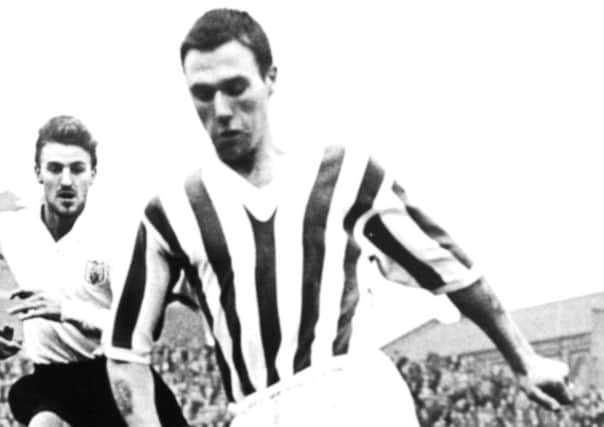When Boot’s men earned bragging rights over Revie’s struggling side


FOR many, 1962 is remembered in history for the near-apocalypse of the Cuban missile crisis, the death of Marilyn Monroe and Brazil’s retention of the World Cup.
Closer to home, it was a time when the Conservatives governed in the shape of Harold Macmillan, who was presiding over a period of steady economic improvement after a time of austerity, much like today.
Advertisement
Hide AdAdvertisement
Hide AdFor Huddersfield Town supporters, comparative riches arrived in the Spring of that year by way of a seventh-placed finish in the old Second Division following a near-miss with relegation to Division Three in the previous campaign.
It was also noteworthy for another milestone that Town have not accomplished since: it was the last occasion that the club finished above Yorkshire neighbours Leeds United at the end of a season.
It has been lost on no one of a blue-and-white persuasion ahead of today’s Football League meeting considering the result of the abandoned match on May 2 between Blackpool and Town at Bloomfield Road that the awarding of three points to the visitors would end that particular 53-year wait.
Times have changed, in football, culture and working life since Eddie Boot’s Town finished comfortably above Don Revie’s Leeds side in that 1961-62 season.
Advertisement
Hide AdAdvertisement
Hide AdThe average house price stood at £2,670 and yearly pay was £799.
A loaf of white bread cost on average around a shilling (5p) and a pint of milk would have set you back 1s 4d (7p); the most popular baby names of the day were David and Susan.
Cliff Richard was the golden boy of British pop and a little-known Liverpudlian band called The Beatles made an inauspicious entry into the charts at No 17 with Love Me Do.
On the pitch in the 1961-62 season, 46-year-old Stanley Matthews left Blackpool to rejoin Stoke City for £3,500 and Ipswich, a side tipped for relegation, won the Division One championship.
Advertisement
Hide AdAdvertisement
Hide AdAccrington Stanley resigned from the Football League, and Jimmy Greaves returned home to join Tottenham Hotspur after his £99,999 move to AC Milan from Chelsea.
In the Second Division, Bill Shankly, in his third season at Liverpool, was able to bask in the considerable glow of winning the league by eight points, with Leyton Orient accompanying them into the First Division.
Under the old two points for a win system, Town finished eight points above Leeds, who staved off an embarrassing relegation to the third tier in the nick of time, with Boot’s side also ending the campaign above the likes of Newcastle, Middlesbrough, Stoke and Derby County.
Instead of Leeds, it was Bristol Rovers who were destined for the drop, with United’s first season in their all-white kit a distinctly abject one.
Advertisement
Hide AdAdvertisement
Hide AdThe strip may have been similar to the one worn by Alfredo di Stefano, Ferenc Puskas and Francisco Gento et al at all-conquering Real Madrid, who won the European Cup five times in a row between 1956 and 1960, but it was there that the similarities ended.
It is widely credited that only the inspired late-season signing of a 31-year-old midfield dynamo hewn from Lanarkshire granite, by the name of Bobby Collins, saved Leeds from the ignominy of Third Division football – and probably Revie from the sack.
It was a time when Leeds were blessed with burgeoning talent in their Northern Intermediate line-up in the likes of Reaney, Cooper, Hunter and Sprake, but with a paucity of senior professionals who were truly fit for purpose in the second tier that campaign.
That season saw Leeds, include a teenage Billy Bremner in their ranks, in real danger of going down as winter became Spring, with a 2-1 loss at Huddersfield on March 3, 1962 being their fifth loss in six games.
Advertisement
Hide AdAdvertisement
Hide AdIt was an afternoon notable for the inclusion in the side of Revie, who recalled himself for his first match since September in a desperate ploy to secure a much-needed victory – in the final game of his playing career, four months off his 35th birthday.
Leeds’s goal that day was scored by Jack Charlton, who was playing up front alongside debutant forward Ian Lawson, who had arrived from £20,000 from Burnley as United’s board loosened the purse strings in a desperate bid to avoid the drop.
But it was not the signing of Lawson that counted in the final analysis, but that of Collins, a £25,000 purchase from Everton.
For Huddersfield, it was a far more pleasurable campaign, in which the leading lights included future Leeds player Mike O’Grady and an immensely talented home-grown full-back called Ray Wilson, later to enjoy World Cup glory with England.
Advertisement
Hide AdAdvertisement
Hide AdWilson was part of a resolute back four which also included the incomparable duo of John Coddington and Ken Taylor, one of two members of that Town squad who also achieved fame in the cricketing sphere, the other being the late Chris Balderstone.
Other names remembered fondly by Town fans from that era include strikers Les Massie and Derek Stokes, along with the talents of Kevin McHale and Peter Dinsdale, who sadly passed away in June, 2004.
Those were the days, as far as Huddersfield Town and their followers were concerned at any rate.